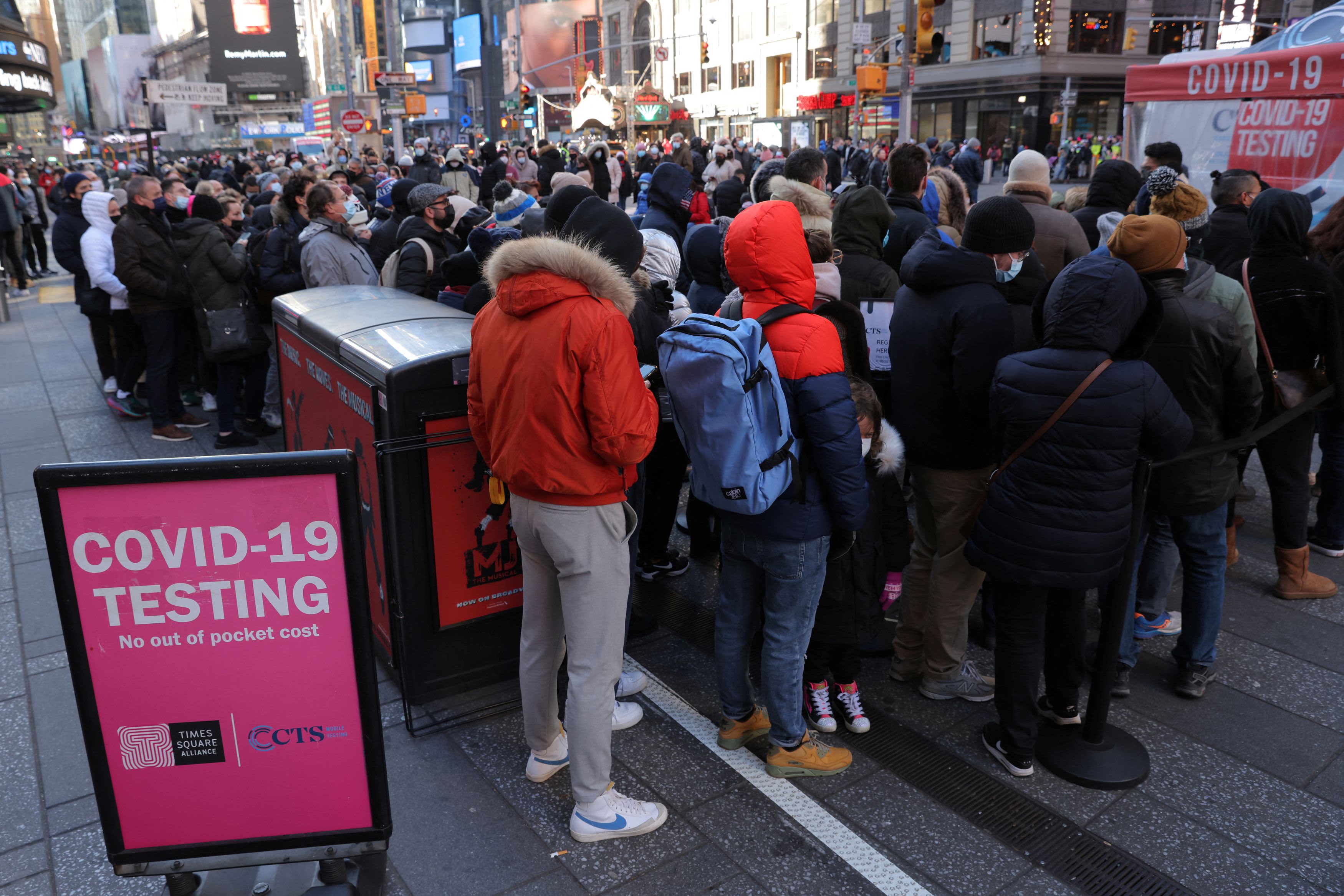
New Yorkers queued for Covid-19 testing in Times Square on Dec. 26, 2021, as the omicron variant continued to spread.
Andrew Kelly | Reuters
Omicron is wreaking more disruption on the American economy.
That could prompt Washington lawmakers to revisit relief strategies from earlier in the Covid-19 pandemic.
Conversations on Capitol Hill have turned to possible aid for small businesses, restaurants, gyms and performance venues that have been hardest hit by this new wave, said Ed Mills, Washington policy analyst at Raymond James.
“The conversation has not yet been extended to assistance to individuals,” Mills said. “But it has gone from something that is not going to happen to something we have to watch.”
The U.S. reached a record single-day record of Covid cases this week, with more than 1 million new infections reported.
More from Personal Finance:
What pandemic aid remains available to families
Have Covid? You can’t get unemployment benefits
Families who got the child tax credit should watch for this IRS letter
Yet some measures of federal relief to help individuals and families – namely expanded unemployment benefits and three sets of stimulus checks – are no longer in effect.
This time around, lawmakers may not revisit those same strategies.
The reason: The pandemic has changed, and so has the U.S. economy.
While the early days of the pandemic was marked by high unemployment and record layoffs, that has now shifted in workers’ favor.
“With millions of job openings that are going unfilled, Congress is going to be hesitant to provide something that could be seen as being a disincentive to filling those positions,” Mills said.
That does not, however, mean no help is available.
States and localities are still sitting on $90 billion from the American Rescue Plan Act that was passed last year, according to Dave Kamper, senior state policy coordinator at the Economic Policy Institute.
They are slated to get $150 billion more later this spring. Schools received $120 billion, much of which may not have been spent, he added.
“We’re not going to fix this pandemic by that ARPA money sitting in a bank account,” Kamper said. “We’re going to fix the pandemic by that ARPA money getting spent, and there’s a ton of good ways to spend it.”
One way states could help is by providing paid sick and family leave to workers now that federal measures have expired. While some states like New York do this, more could add these programs to help alleviate the burdens of the pandemic, Kamper said.
Providing paid leave could help inspire more workers who are unable to take time off to get vaccinated, he said.
States could also create one-time payments for residents – either as an incentive to get vaccinated or as paid time off to get the vaccine, he said.
They could also move to bolster unemployment insurance, though large scale efforts would still need to be handled by the federal government, Kamper said.
On Capitol Hill, more aid to individuals could already be in the works via the proposed extension of the expanded child tax credit.
Eligible families received monthly payments of up to $300 per child in 2021. The last payments were deployed in December and will not continue unless Congress passes the Build Back Better Act.
Democrats are hoping to pass that bill through a simple majority known as reconciliation. But those efforts have stalled. Sen. Joe Manchin, a Democrat from West Virginia, has said he would like to see the extended credit have stricter targeting requirements.
“The conversation about individuals really does start with what to do with the child tax credit,” Mills said.




